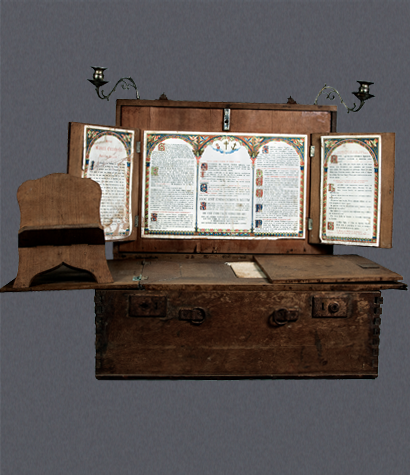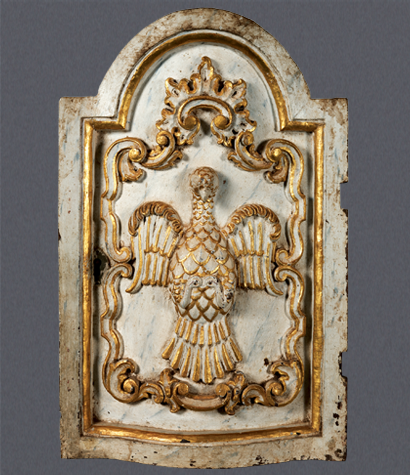
The standing alms box placed on the church floor was in use from the European Middle Ages. Of this imposing Indo-Portuguese example, one of a pair, could its maker have ever known that it would outlive him by a few hundred years?
Though the wood has grown soft, and crumbled in several places, the alms box still retains some of its beautiful original polychrome colouring. Fashioned like a traditional pillar as could have been part of a Malabar wooden temple, it was reinterpreted for its new function of receptacle by the Goan artist. The alms box is made up of a single piece of wood carved in the round. It has a circular base, with a smaller circular section on top, above which is carved a larger pot-like piece resembling the purna kalasha used in Hindu ritual. Above this is another richly carved section that culminates in a smiling winged guardian angel. The angel’s arms seem to hold out the flat half-oval tray-like piece of wood with scored edges carrying the slot that opens into container below.
Traces of the rich polychrome painting that decorated the alms box remain. The angel is in pale blue with touches of green, with the sculpted ridges being set off by a bolder shade of blue. His face is pale brown, as are his eyes; his curling locks carry traces of the original black. The rest of the alms box is elaborately carved, and decorated with auricular, cord and foliage motifs. It is similarly painted in shades of blue with touches of green. While only traces of green can be seen on the crumbling base with its carved, curving plant motifs yet visible, the smaller base above is in a rich brown, and decorated with large pearl motifs in the characteristic Indo-Portuguese style.
PUBLICATIONS
Museum of Christian Art, Convent of Santa Monica, Goa, India, Calouste Gulbenkian Foundation, Lisbon, 2011.







